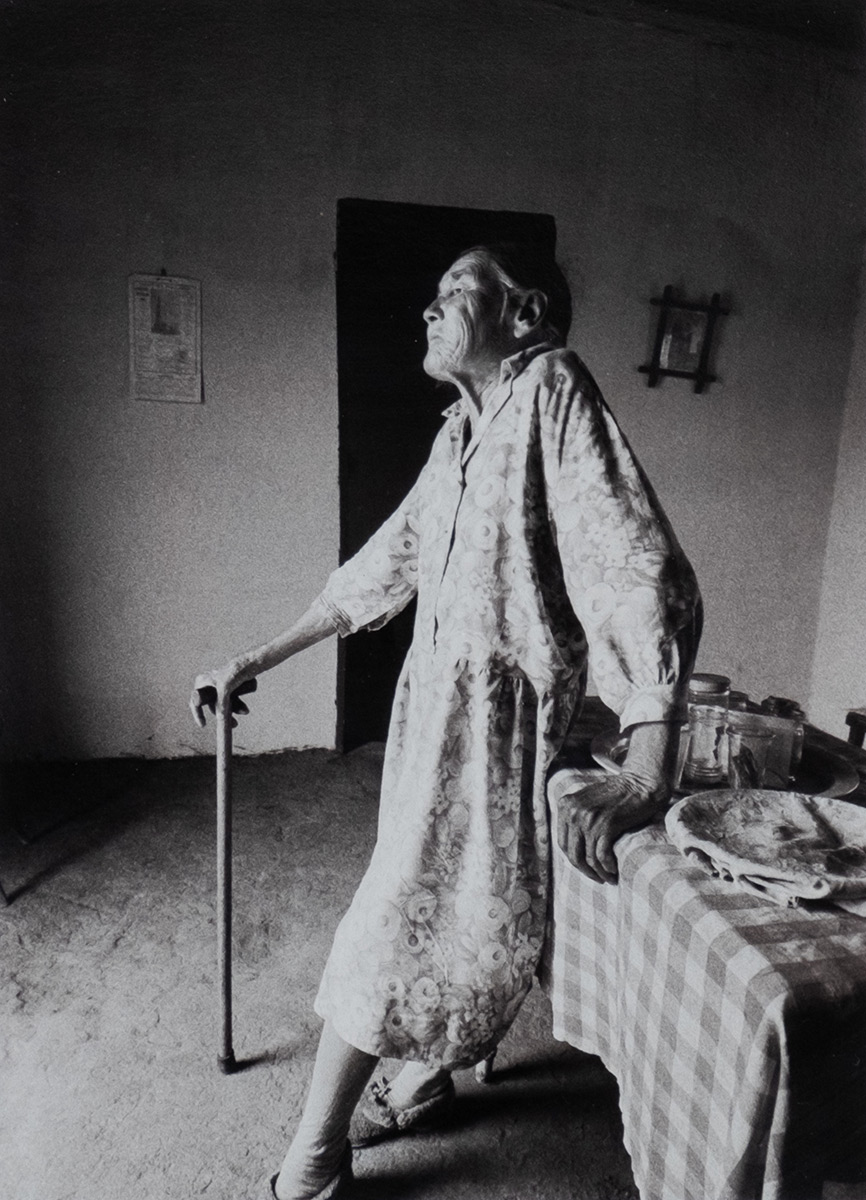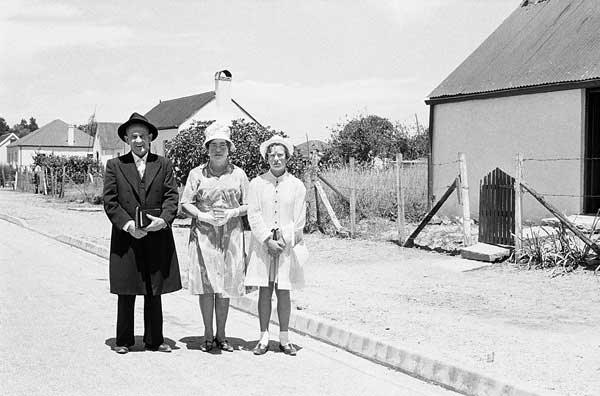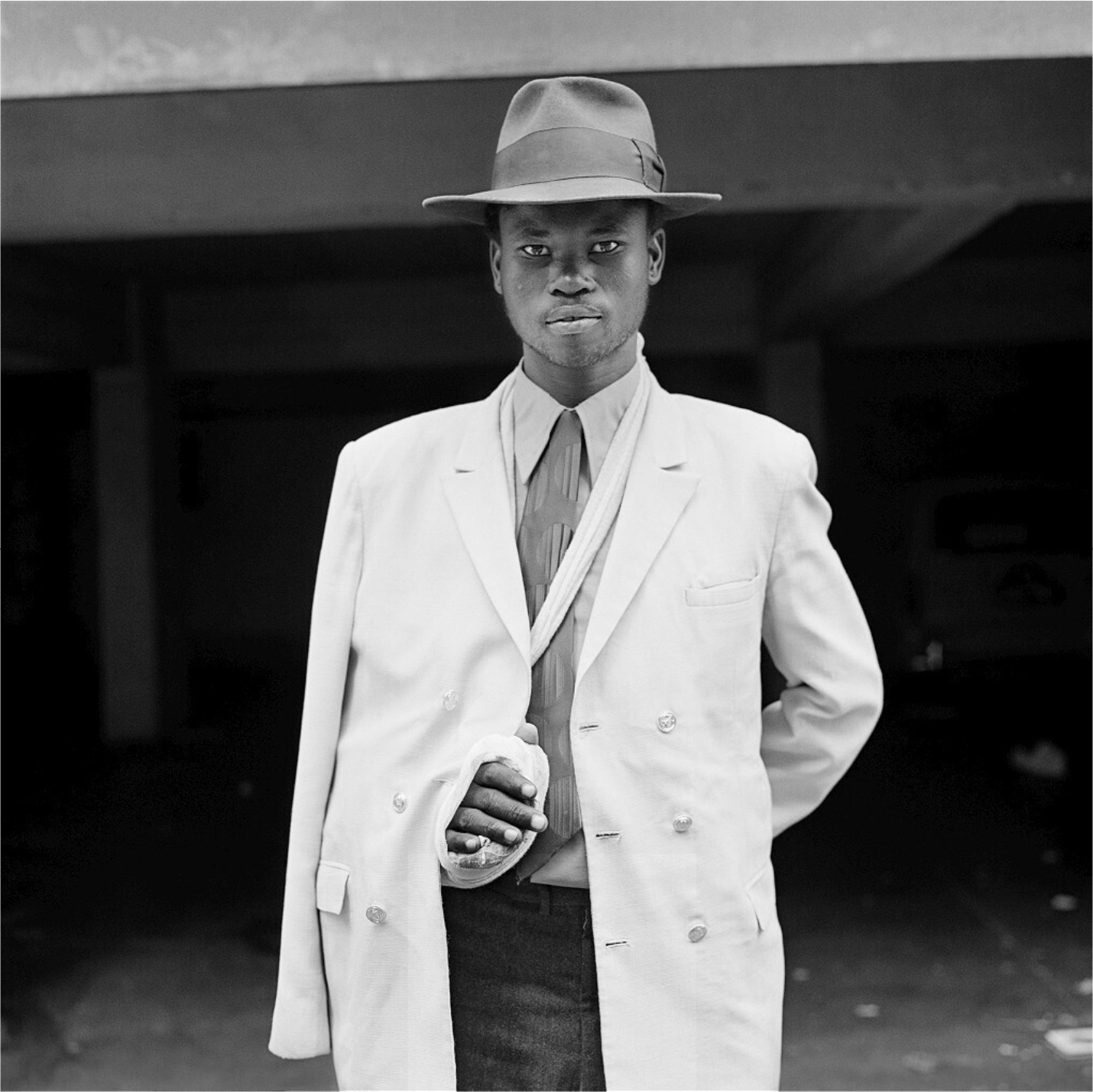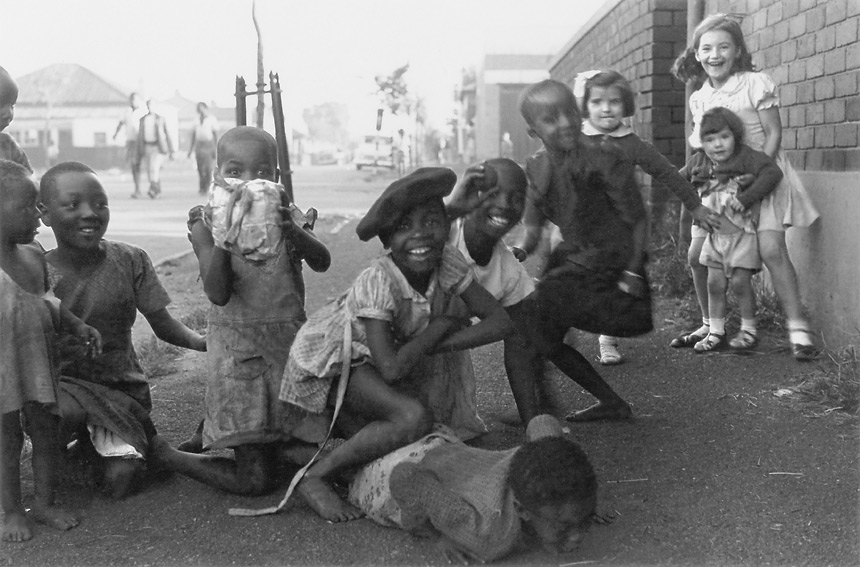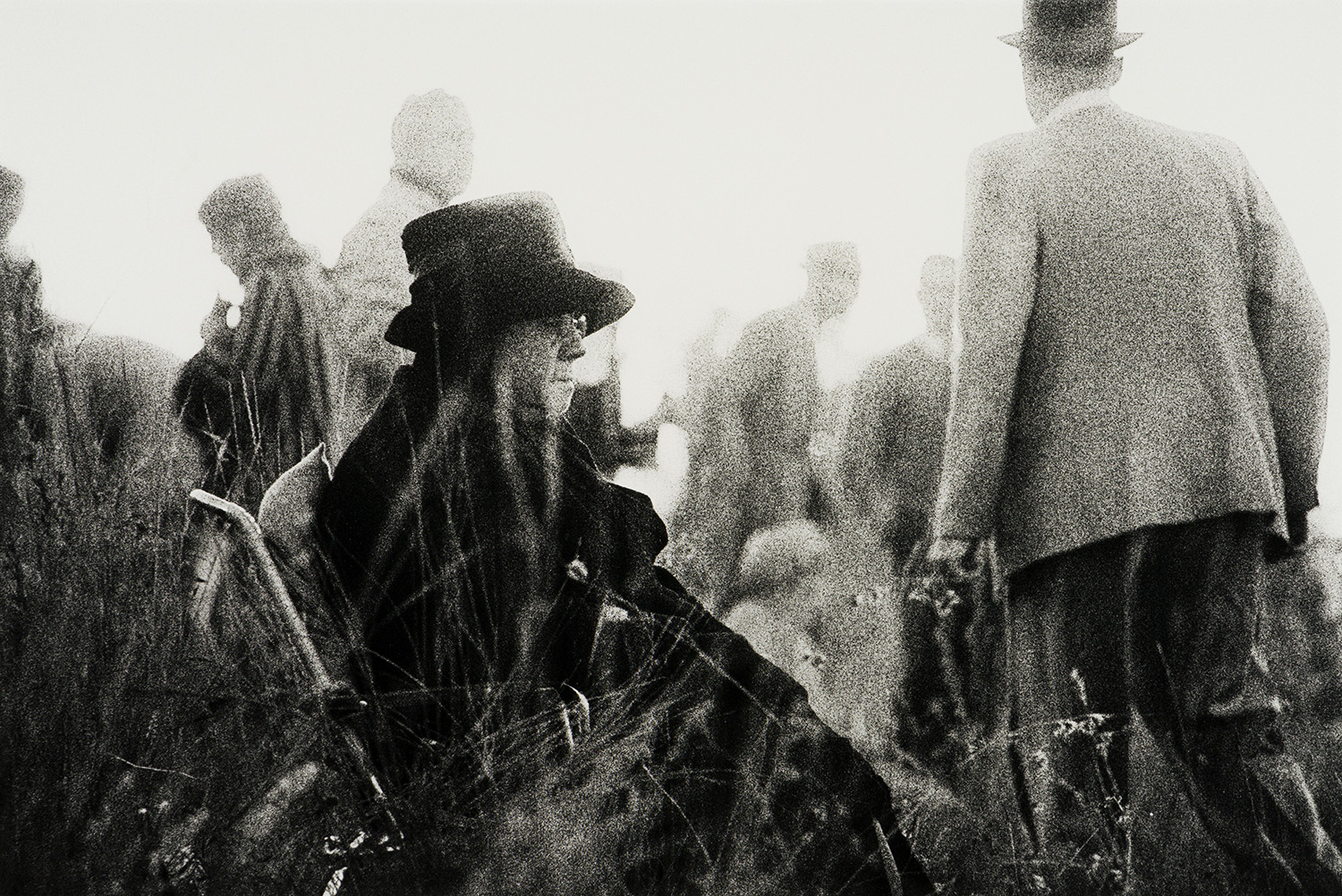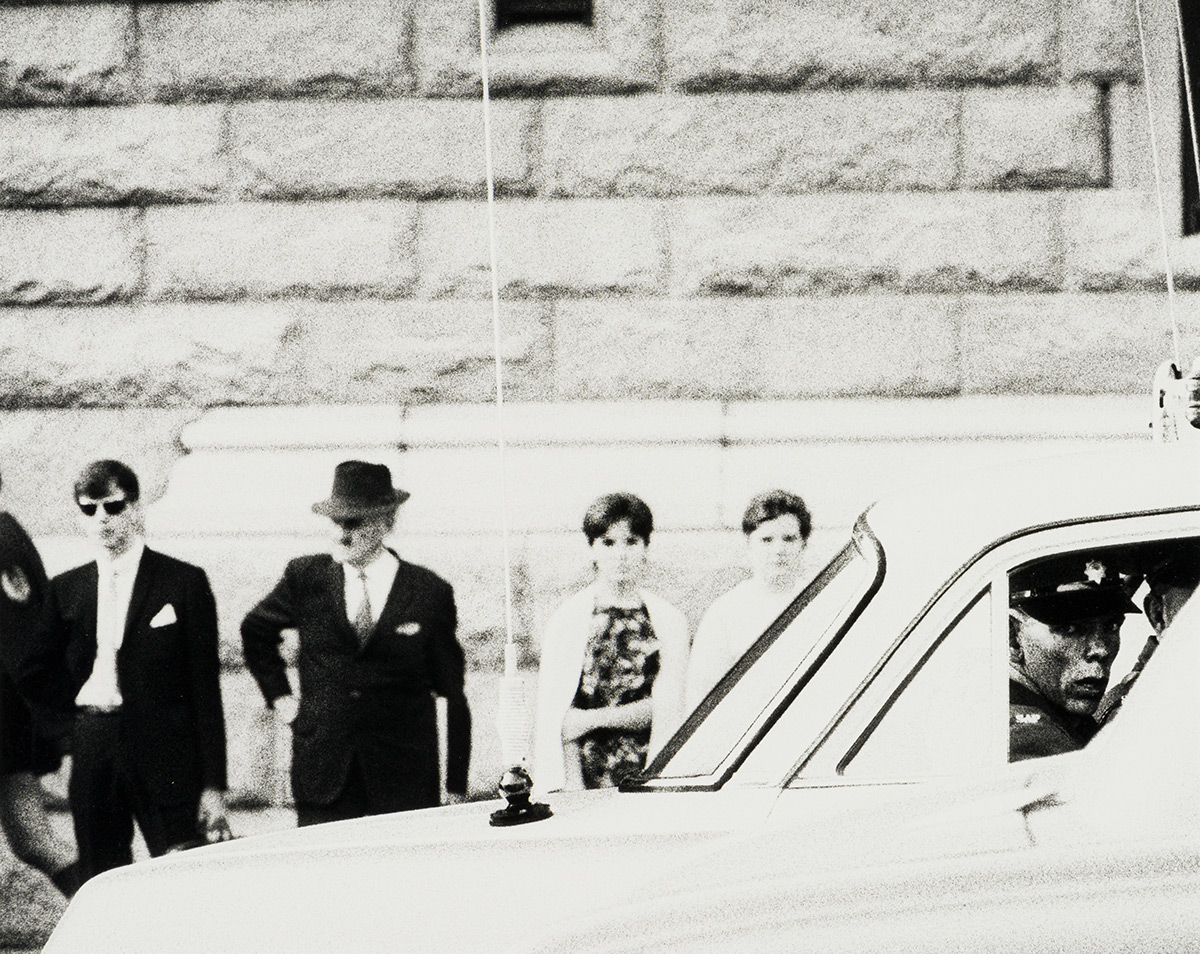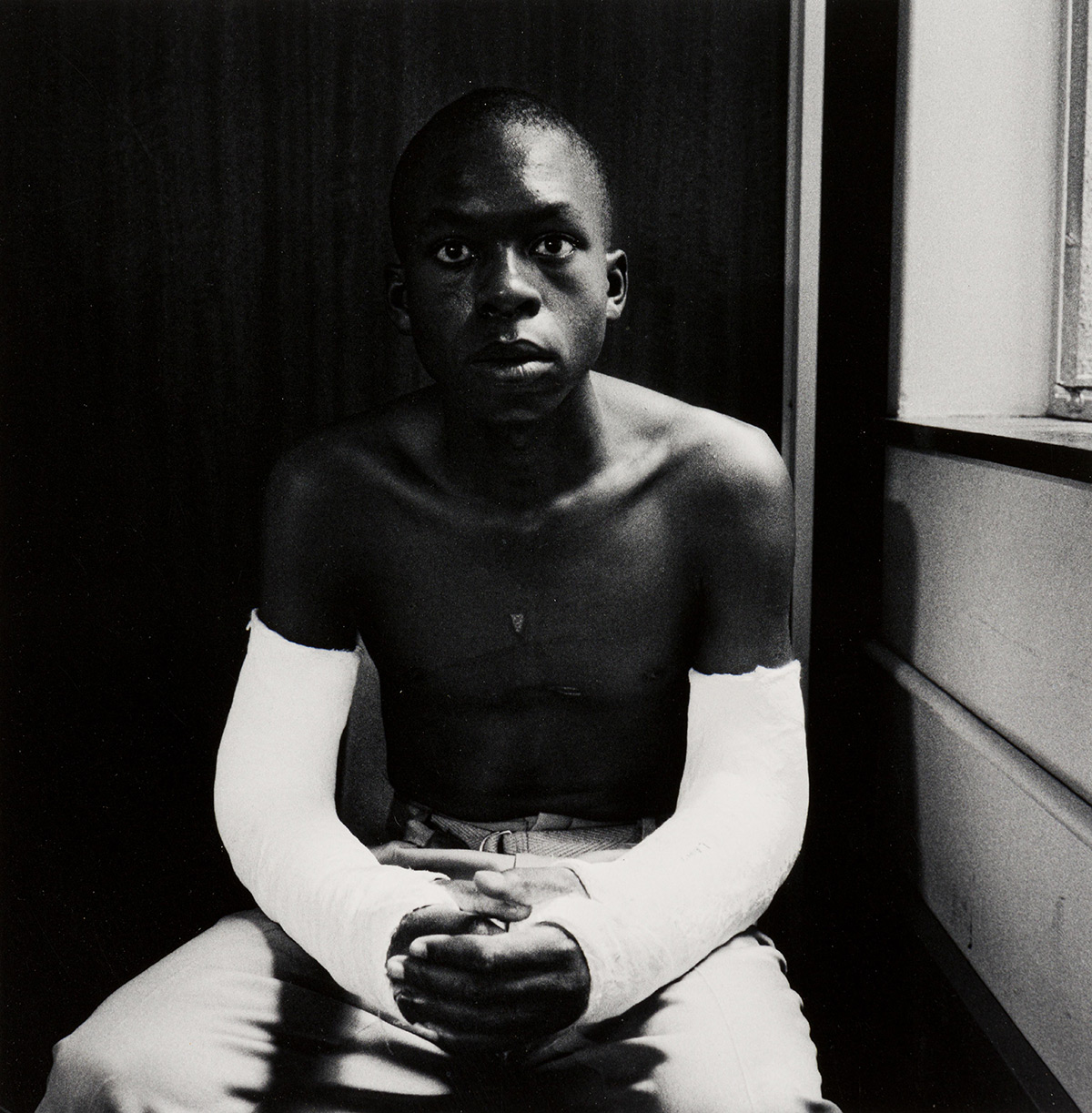David GOLDBLATT (b. 1930)
An Elder Of The Dutch Reformed Church Walking Home With His Family After The Sunday Service, Carnarvon, Cape Province (Northern Cape), January 1968
2006
silver gelatin print on fibre paper
27 x 41 cm
This photograph was exhibited as part of Some Afrikaners Revisited at what was then the Michael Stevenson Gallery in 2006, and published as part of the book of the same name (Umuzi, 2006). The exhibition and book offered an expanded view of a body of work, first published by in 1975 as Some Afrikaners Photographed (Murray Crawford). Goldblatt took the photographs for this essay between 1961 and 1968.
This photograph of a white family walking home from church was originally published in relation to an identically captioned and similarly… Continue Reading
On Monumentkop At Dawn: Preparing For The Parades And Speeches Of The Republic Day Festival, Pretoria, Transvaal (Tshwane, Gauteng), 31 May 1966
2006
silver gelatin print on fibre paper
30.5 x 46.5 cm
This photograph was exhibited as part of Some Afrikaners Revisited at what was then the Michael Stevenson Gallery in 2006, and published as part of the book of the same name (Umuzi, 2006). The exhibition and book offered an expanded view of a body of work, first published by in 1975 as Some Afrikaners Photographed (Murray Crawford). Goldblatt took the photographs for this essay between 1961 and 1968.
In the opening essay of Some Afrikaners Revisited (Umuzi, 2006), entitled ‘The anxiety of identity and Some Afrikaners’, Ivor Powell expands… Continue Reading
Policeman In The Squad Car On Church Square, Pretoria (Tshwane), Transvaal (Gauteng), 1967
2006
silver gelatin on fibre paper
27 x 33.5 cm
This photograph was exhibited as part of Some Afrikaners Revisited at what was then the Michael Stevenson Gallery in 2006, and published as part of the book of the same name (Umuzi, 2006). The exhibition and book offered an expanded view of a body of work, first published by in 1975 as Some Afrikaners Photographed (Murray Crawford). In the text that accompanied the 2006 exhibition, Goldblatt offered some insight into how this body of work originally took shape:
Around 1965 I began to think of an extended photographic essay on Afrikaners, something of broader scope than my explorations thus far which, although far beyond my experience, might conceivably become a book. I made contact with people in the arts, professions, business and politics and did some photography there… Continue Reading
BIOGRAPHY
David Goldblatt was born in Randfontein, a small mining town outside of Johannesburg. He was the third son of Eli Goldblatt and Olga Light, both of whom came to South Africa as children with their parents to escape the persecution of the Lithuanian-Jewish communities in the 1890s.
Goldblatt matriculated in 1948 and set his sights on a career in photojournalism, largely influenced by the work of the photographers in magazines such as Life and Picture Post. When his father became ill with cancer, he took on the responsibility of running the family’s men’s outfitting business, while studying part-time for his Bachelor of Commerce degree at the University of the Witwatersrand and continuing to take photographs in his spare time. After the death of his father in 1962, he sold the family store and became a full-time professional photographer.
Through his lens, he chronicled the people, structures and landscapes of South Africa spanning the period from 1948, through the rise of Afrikaner Nationalism and the apartheid regime, into the democratic era. He documented life on the Witwatersrand, where the local economy was based chiefly on mining, the sweeping landscapes of the Karoo desert, the arduous commutes of migrant black workers, the Afrikaner farming community of the Groot Marico district in the then Western Transvaal, the middle class South Africans of Boksburg and more. His broadest series, which spans six decades, examines how South Africans express their values through the structures, physical and ideological, that they have built.
In 1998, Goldblatt was the first South African to have a solo exhibition at the Museum of Modern Art in New York.
In 1989, he founded the Market Photography Workshop, a training institution for aspiring photographers in Johannesburg.
In 2001, a retrospective of his work, David Goldblatt Fifty-One Years, began a tour of galleries and museums. He was one of the few South African artists to exhibit at Documenta 11 (2002) and Documenta 12 (2007) in Kassel, Germany.
He held solo exhibitions at the Jewish Museum and the New Museum, both in New York. His work was included in the exhibition ILLUMInations at the 54th Venice Biennale in 2011, and was featured on shows at the San Francisco Museum of Modern Art and Barbican Centre in London.
In 2017, Goldblatt installed a series of portraits from his photographic essay Ex-Offenders in former prisons in Birmingham and Manchester in the UK.
He was the recipient of the 2006 Hasselblad award, the 2009 Henri Cartier-Bresson Award and the 2013 ICP Infinity Award.
Goldblatt published numerous photobooks of his work, including On the Mines (1973), Some Afrikaners Photographed (1975) and In Boksburg (1982).
He received an Honorary Doctorate of Literature from the University of Cape Town in 2001 and from the University of the Witwatersrand in 2008.
In 2016, he was awarded the Commandeur des Arts et des Lettres by the Ministry of Culture of France.
In the last year of his life, two major retrospectives were opened at Centre Pompidou in Paris, and the Museum of Contemporary Art in Sydney.
The Goldblatt Archive is held by Yale University, in New Haven, Connecticut.


